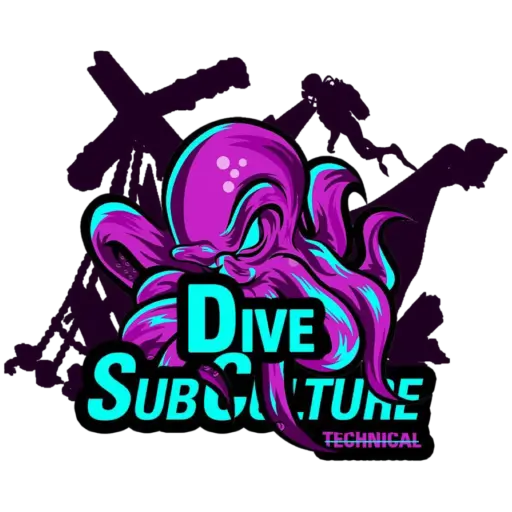By Dive Subculture Technical

When it comes to technical diving, few things are more crucial than managing your gas. At depth, where mistakes can turn catastrophic, the ability to accurately plan and execute your gas management strategy is truly a lifeline. Here at Dive Subculture Technical, we’ve seen firsthand how proper gas management can make or break a dive, especially when you’re pushing boundaries in deep wrecks, caves, or mines.
As technical divers, we venture far beyond the recreational limits, often diving in environments where the surface is not an option for a quick escape. That’s why having a solid gas management plan is non-negotiable. Whether it’s a deep trimix dive or an extended cave penetration, managing your breathing gas properly is critical for survival and success.
Planning for the Right Mix

Diving beyond 30 meters often requires the use of mixed gases—whether that’s a combination of oxygen, nitrogen, and helium (trimix) or simply enriched air nitrox to extend your no-decompression limits. At Dive Subculture Technical, we emphasize the importance of choosing the right gas mix for the dive objective.
Why is this important? It’s all about balancing gas narcosis, oxygen toxicity, and decompression obligations. For instance, at 60 meters, you wouldn’t want to dive on air due to the high risk of narcosis and oxygen toxicity. Trimix becomes a safer alternative. However, that choice comes with a trade-off: you’ll need to manage decompression obligations more strictly, and the bottom time must be carefully calculated to ensure you can safely ascend.
Gas mixes allow us to tailor our breathing gases to the depth, but they also demand meticulous planning. Without the right blend and the right amount of gas, your dive can turn from exploration to survival in a heartbeat.
The Role of Redundancy

Technical diving is all about redundancy. It’s not just about having a backup plan—it’s about having a backup for your backup. In the case of gas management, this means carrying additional tanks, known as stages or bailout tanks, depending on the dive. These secondary systems can save your life if you experience a gas failure or run short of breathing gas.
I can recall one dive at a mine site in Kanchanaburi, Thailand, where my dive partner and I had gone deep into the system. The dive was going smoothly, but about 35 minutes in, one of his regulators began free-flowing. A free-flowing regulator is one of those situations where, if you’re not prepared, it can escalate quickly. But because we’d planned with redundant gas, we managed to finish the dive safely using his stage bottle while shutting off the affected tank. This is just one of many instances where redundancy isn’t just a luxury—it’s a necessity.
Redundancy goes beyond just carrying extra gas; it also means being proficient in gas switching, ensuring proper labeling, and understanding the limits of each gas mix. It’s this level of preparedness that keeps technical divers safe when diving far beyond recreational depths.
Rock-Solid Gas Planning
One of the most important principles we instill in our students at Dive Subculture Technical is the 1/3 rule for gas management. Whether you’re diving open water or in an overhead environment, this simple rule can save your life: use one-third of your gas to get to your target, one-third to return, and keep one-third as a reserve for emergencies. But gas management doesn’t stop at this rule—it’s just the foundation.
Gas consumption is highly variable depending on depth, exertion level, and stress. This is why we conduct extensive dive simulations with our students. Knowing your personal gas consumption rate is vital. When you’re task-loaded, or in a high-stress environment like a cave or wreck dive, your breathing rate can skyrocket. Without factoring this into your gas plan, you may find yourself cutting it too close for comfort.
And then there’s decompression. Planning the right amount of gas for your decompression stops is essential, particularly on deep dives where you may have long hang times. Running low on gas while you’re still decompressing is a technical diver’s worst nightmare, and it’s avoidable with proper planning.
Why Gas Management is a Lifeline
At Dive Subculture Technical, we believe that gas management isn’t just about numbers and rules—it’s about cultivating the mindset of a technical diver. It’s about the discipline of always preparing for the unexpected, understanding your limits, and, most importantly, respecting the underwater environment. Every diver who walks through our doors knows that we don’t just teach skills—we teach survival strategies.
In the end, technical diving is about pushing the limits safely. With the right gas management plan, we can explore deeper, stay longer, and push our own limits while keeping safety at the forefront. For us at Dive Subculture Technical, every dive is a lesson in respect for the environment and our own limitations. And gas management? That’s the lifeline that makes it all possible.







